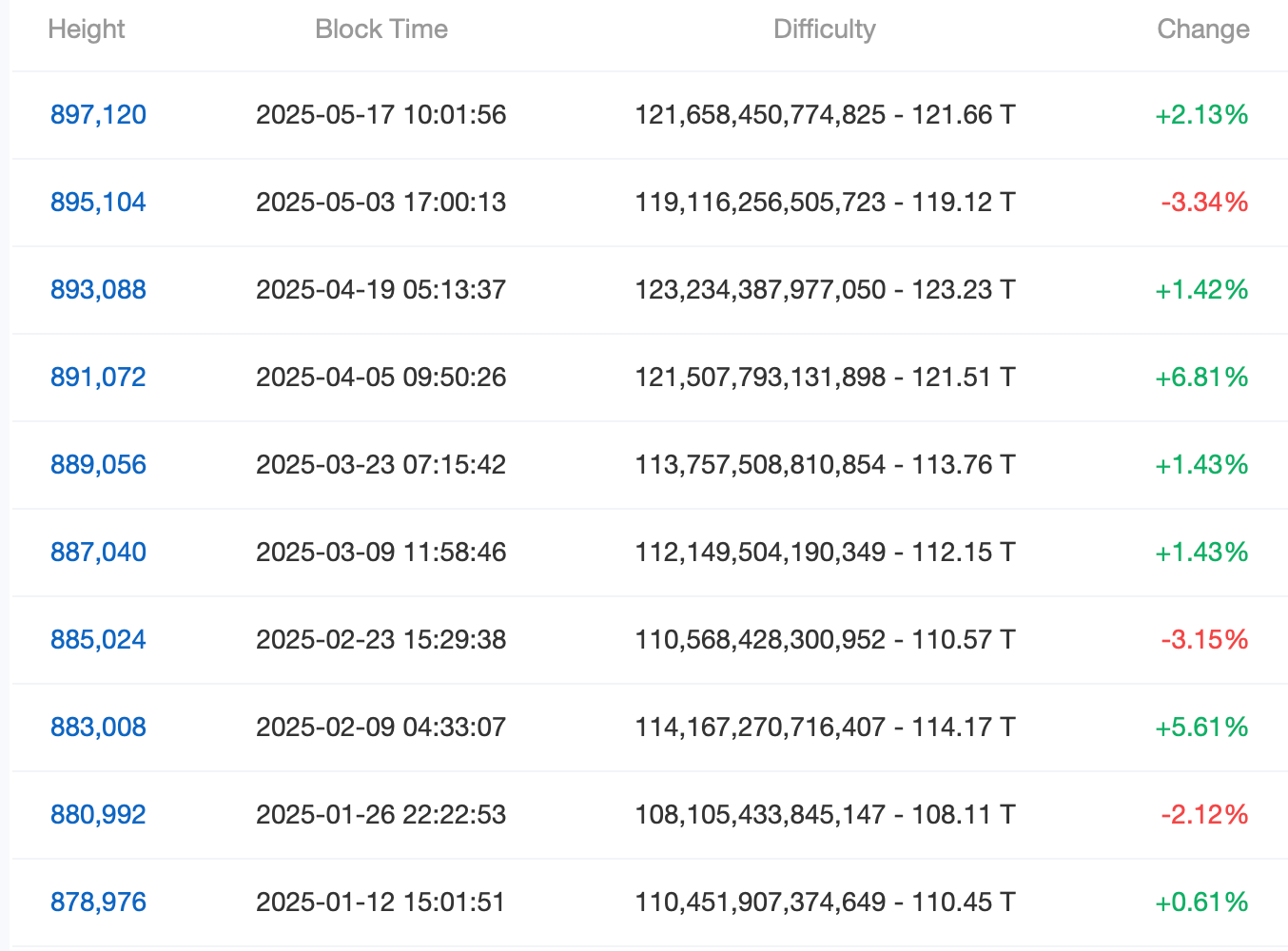Bitcoin mining has become more difficult due to a sharp increase in difficulty and a decrease in hashrate

On Saturday, at block height 897,120, Bitcoin mining difficulty increased by 2.13%, reaching 121.66 trillion and slightly increasing the computational load needed to find new blocks.
Bitcoin Mining Difficulty Exceeds 121 Trillion
Miners now face slightly higher odds of successfully solving blocks, as the adjustment makes the process 2.13% more difficult. While the current figure is 121.66 trillion, it still falls short of the all-time difficulty set at block 893,088.
 Source: Cloverpool.com Explorer.
Source: Cloverpool.com Explorer.
So far in 2025, the network has experienced six difficulty adjustments, resulting in a total increase of 13.83%, as well as three difficulty adjustments, totaling 8.61%. In parallel, Bitcoin’s total computing power has declined from a peak of 929 exahashes per second (EH/s) to 848.53 EH/s, based on the seven-day simple moving average (SMA) tracked by hashrateindex.com — showing a decline of over 80 EH/s.
Despite the drop in raw hash power, miners have benefited from higher profitability as the price of Bitcoin has remained above $100,000 for ten days in a row. About a month ago, the hash rate — the estimated profit from working 1 petahash per second (PH/s) for a single day — was around $44.29 per PH/s. Today, that figure has improved significantly, to $54.93 per PH/s.
Bitcoin difficulty adjustments and fluctuations in hashrate provide subtle insight into the evolving dynamics between miner incentives and network resilience. As economic conditions, energy costs, and price trends continue to impact mining economics, the delicate balance between participation and profitability will remain a key element of the narrative.
Source: cryptonews.net



